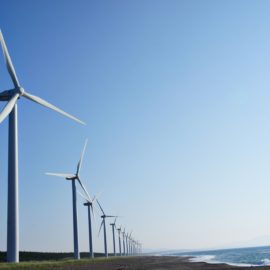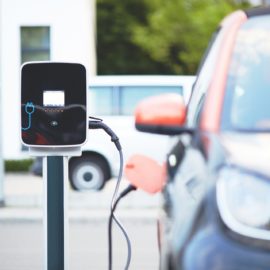
We want windmills off shore but we want money too. One bill may prevent both, thank you Louisiana legislators.
A proposed law could both open Louisiana waters to offshore wind energy development and close it by making wind farms too costly. House Bill 165 would set up a legal framework to allow offshore wind leasing in state waters, which extend about three miles from the coast. But the bill also proposes that the state get a cut of the revenues generated by wind farms. That’s common in oil and gas leasing, but it’s “unheard of in the wind industry,” said Katharine Kollins, president of the Southeastern Wind Coalition. “The bill says (developers) not only pay to lease, but the state also wants part of the financial gain from the project,” she said. “That’s not been a scenario that wind developers have come across before.”
nola.com
Yes, wind farms are energy and yes, oil and gas are energy but they are two different cultures and what one does may not be what the other does.
Because offshore wind is still in the development phase in the U.S., companies are not currently paying royalties on production or other fees in federal waters, where all large-scale wind projects are proposed or under construction. Wind farm development, construction and maintenance costs are high and profits are relatively low. Unlike oil, which can be stored and shipped to markets across the world, electricity from offshore wind has to be used immediately, typically by nearby power utilities. Another major difference: Oil is a finite resource. Louisiana’s shallow waters have slower wind speeds than the deeper parts of the Gulf of Mexico managed by the federal government, which isn’t proposing to take a share of offshore wind energy earnings. Asking wind developers to give up a portion of what little money they earn may make them think twice about building wind farms in Louisiana waters.
The bill, in this oil state which is not an oi state needs to be looked at again.
Rep. Jerome “Zee” Zeringue, the bill’s sponsor, admitted he may have to “tweak” the bill as he hears from more stakeholders. The Houma Republican said the bill was developed with input from the state Department of Natural Resources, which takes a cut of oil and gas revenues in state waters and would like to do the same with offshore wind. “This is new to everyone, and we’re sort of building the plane as we fly it,” Zeringue said on Friday. “At this point, I want to get it on the books and allow offshore wind in Louisiana. Maybe we’ll amend it because I’m open to whatever makes it better.” While most large wind developers favor federal waters, Louisiana might be a rare state that could attract a near-shore project, Kollins said. That’s because Louisiana is likely to put up less of a fight than other states over a wind farm that people can see from the shore. “Louisiana’s already got a working coastline,” Kollins said, referring to the many oil platforms visible from Grand Isle and the handful of other small communities on the marsh-dominated outer coast. States with larger coastal populations and beach-dependent tourism have strongly opposed oil platforms and wind farms. “If this bill were proposed in Florida, I’m pretty sure it wouldn’t ever hit the House or Senate floor,” Kollins said.
The bill also sets a maximum size for the wind farms, but this is not a questionable aspect.
The Louisiana bill would also set the maximum size for wind leases at 25,000 acres. That’s about five times larger than maximum for oil and gas leases but is a good fit for the wind industry, Kollins said. Wind farms generally need about 1,000 acres per turbine. Zeringue said offshore wind projects will offer good-paying jobs to Louisiana workers, especially those with experience in the offshore oil and gas industry. “I want to expand these opportunities,” he said. “It’s pretty promising for our region in terms of employment.” Two offshore wind projects off the coasts of Texas and Louisiana could create up to 14,700 jobs during a likely three-year construction period and up to 2,800 permanent positions associated with operations and maintenance, according to a recent report by the American Clean Power Association. Many of the skills and infrastructure that support offshore oil and gas can be applied to building and maintaining wind farms. Several Louisiana companies that serviced the offshore oil and gas industry helped build the country’s first offshore wind farm off the coast of Rhode Island in 2016. Louisiana shipbuilders, metal fabricators and engineers continue to broaden their involvement in the burgeoning offshore wind market on the East Coast.
Oil leasing areas will not start until 2025 so while it is good we are preparing we need to prepare carefully not not throw out the baby with the wash water.
The Bureau of Ocean Energy Management plans to begin leasing the Gulf’s federal waters by 2025, and allow wind farm construction in 2028 or 2029. Several offshore wind companies, including Orsted and RWE – the two biggest players in the industry – have expressed interest in developing wind farms off the Louisiana and Texas coasts, despite the region’s propensity for hurricanes and slower average wind speeds than New England and the Mid-Atlantic states. Developers say the Gulf largely makes up for its shortcomings by offering a ready-made offshore labor force – one that’s been hungry for work as the oil and gas industry has declined. In Houma, where Zeringue is from, and other south Louisiana industrial hubs, the number of oil and gas jobs have been cut in half over the past decade. Statewide, the industry employs less than 2% state’s workforce, according to state data. “Wind offers us excellent opportunities, and I think there’s a good chance we can bring these projects home to Louisiana,” Zeringue said.
Offshore wind power is coming and we just need to make sure we welcome it.



